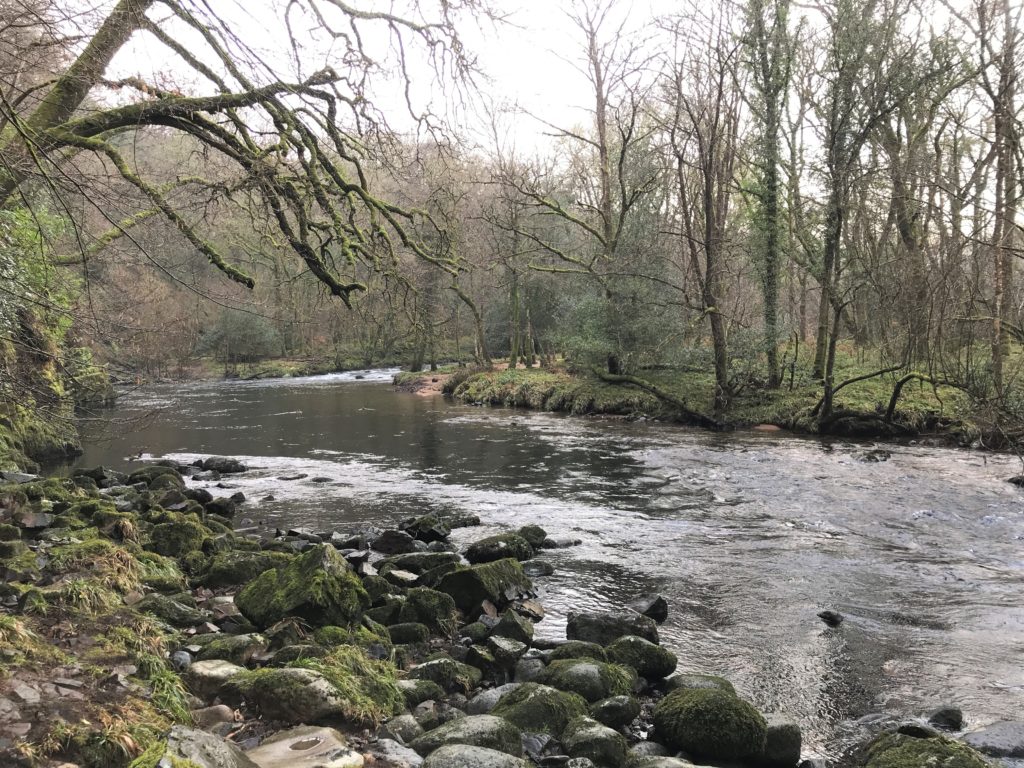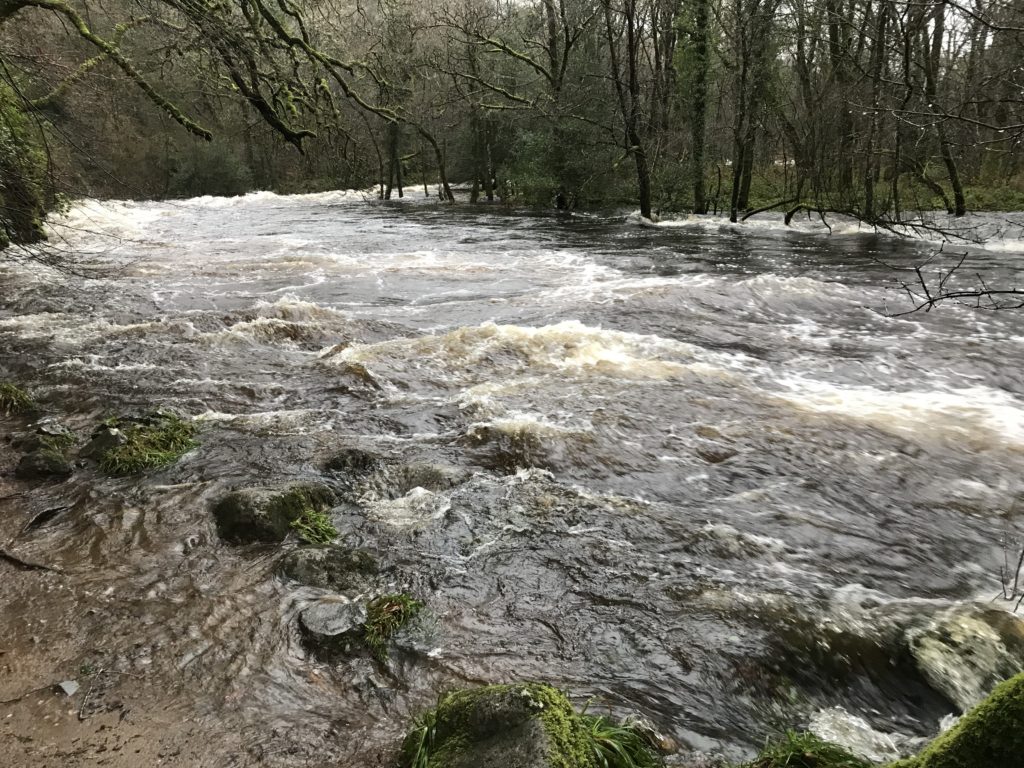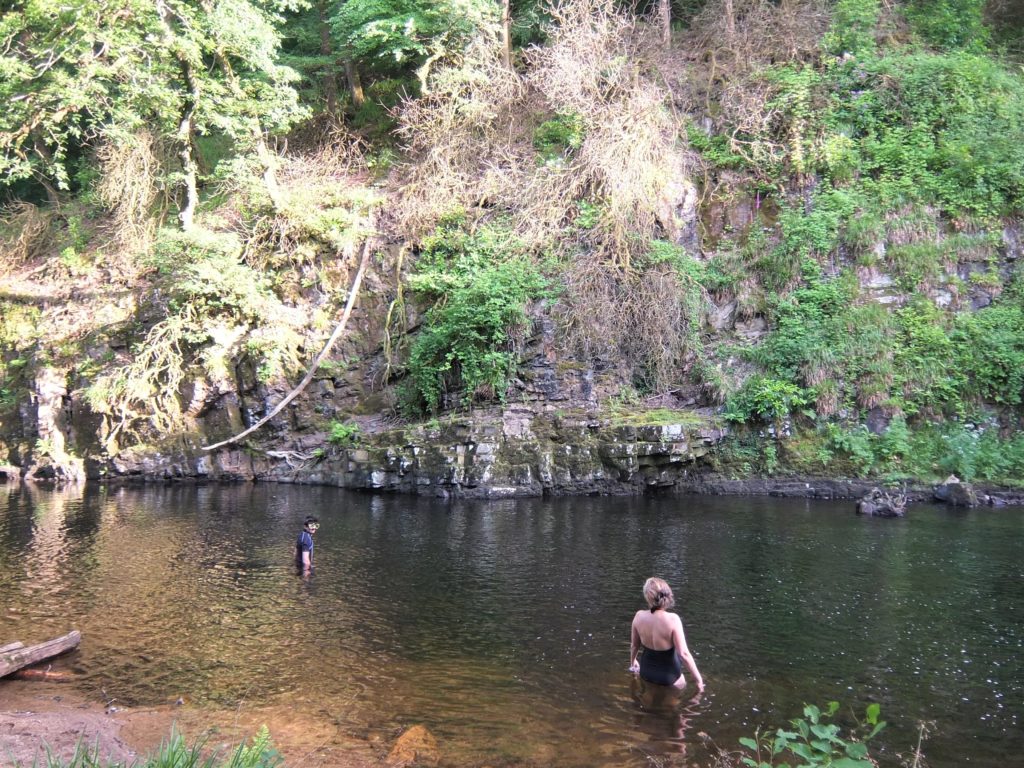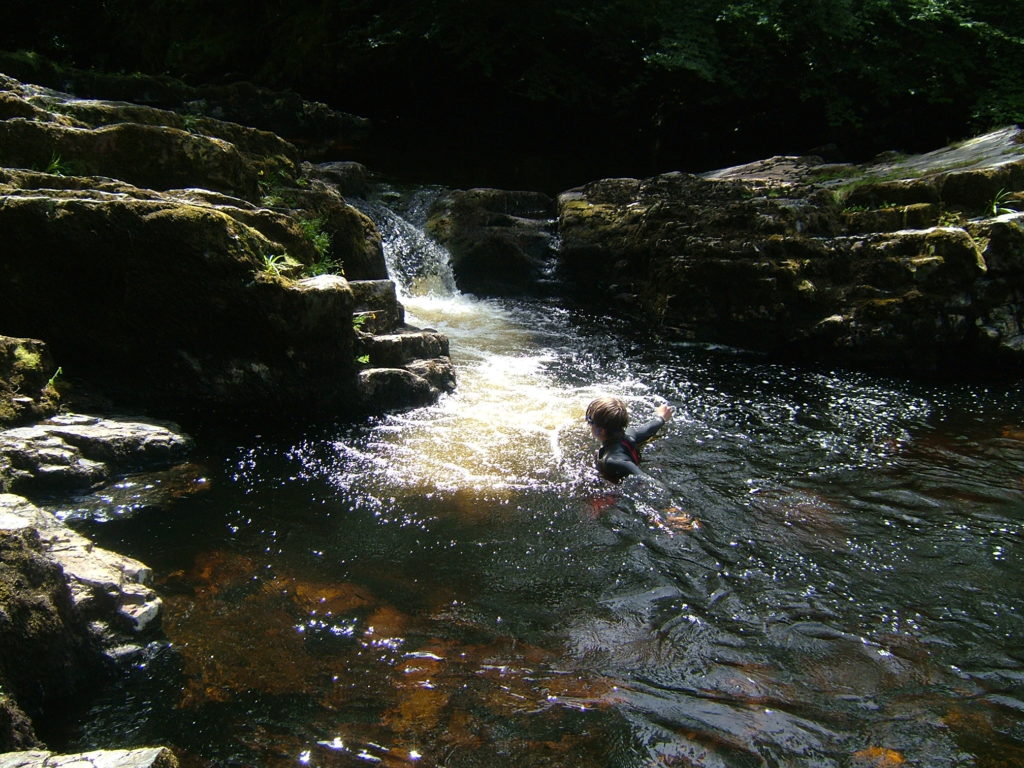Sophie Pierce reflects on the waters of the River Dart, which run ever-presently through her life.

It’s a foul day with rain falling incessantly and winds wailing around the house. I don’t want to go out but the dog needs a walk. As I head off through the storm to my habitual haunt along the River Dart in Devon, I’m assailed by streams of brown water running down the road like cold tea pouring out of hedges and drains.
I drive past Holne Weir, normally a lazy, calm clear pool that’s ideal for swimming. Today the river is whizzing by like some sort of out-of-control machine. The trees are up to their waists in water. I cross ancient Holne Bridge and check the fence on the bank – our informal river gauge. Usually, the water is below the bottom rail. Today the fence is completely submerged.
At New Bridge (in fact another ancient stone bridge), I get out of the car and go through the gate that leads into the woods alongside the Dart. I can hear the white noise of the river and when I reach Black Rock – a huge slab that we sunbathe on in the summer — it is no longer visible. Instead, all I can see is a dramatic rolling wave. At Betsy’s Pool, opposite Wellsfoot Island, the rocks and beach are completely submerged.

The river today is a force to be reckoned with. Like a vast twisting muscle, it churns through the valley, pushing everything out of its way. The Dart is, notoriously, a ‘flashy’ river, with the ability to turn from a benign trickle to a raging monster in a matter of hours. Old Dartmoor tales abound of enormous boulders being moved, and the tops of clapper bridges being swept away in weather like this. I have seen this myself, through years of swimming in the same pools. At Holne Weir, for example, a huge granite fence post, with three holes in it, which lies on the river bed, has moved about a hundred yards downstream over the last decade. You wouldn’t think that such a heavy object would be moveable, but it is when the river is in spate as it is today.
That ability of the river to change in a heartbeat is, I think, key to my relationship with it. It is interesting. It has a mercurial nature as well as being wild and beautiful. It is forever changing shape. On sunny summer days it feels like heaven, with a balmy, captivating radiance. On days like today — well, it’s frankly quite frightening.
And although I’m in something of a grump today, because of the weather, I still love to be by the Dart, even when it is angry and fearsome, as it is a constant that has run through my life for the last twenty years. It’s part of my existence, my family story. Picnics and paddling when the children were small, mucking around in wetsuits with surfboards when they were older. Swimming all year round with friends, finding hedgehog mushrooms, chanterelles and ceps in the autumn in the woods that border its banks.
The Dart is somewhere I go when I’m happy, when I’m sad, when I’m bored, when I’m angry. It sucks up my emotions as I walk beside it or swim in its gorgeous clear waters, losing myself in the granite world beneath the surface. It helps me to think, as I absorb its energy and its presence. It is just always there, whatever happens.

It’s an old friend, and, like an old friend, I know it very well. I have my own names for the various pools I frequent. The stretch by Holne Weir is the Swift Swim Solution — or SSS for short — because it’s the nearest pool to my home in Ashburton, and perfect for quick dips. Then there’s the Double Jacuzzi, just up from New Bridge, with twin cascades perfect for a back massage. Another favourite spot is Ladies Pool just above Black Rock — although I didn’t name that one, a chap who was there while we were swimming once told us that was what it was called. Maybe he had just made that up? No one owns the river, and I’m sure everyone must have their own names for their special places.
Another pool we call Felix’s Pool after my older son, who discovered it when he was about 10, by diverting off the main path and heading down the bank towards an area that didn’t look accessible. It turned out to be very accessible, and was perfect for he and his younger brother Lucian, with large ledges on the edge leading to quite shallow water where they could play quite happily.

Little did we know that, 10 years later, we would be throwing daffodils into this pool in Felix’s memory, having just had the devastating news that he had died, aged 20, while a student away at university. On hearing this, we instinctively gravitated towards the river, and ‘his’ pool, going back to somewhere that was relevant. It was, in all the horror of his death, good to have somewhere to go that held some meaning for us as a family. The river was there for us. It didn’t make anything better but it felt like the right place to be.
Felix is buried above the Dart in a field called Sharpham Meadow, a natural burial ground that overlooks the estuary as it snakes towards the sea. When I visit his grave, I look down to the water and it links me back to him, back to a kind of earth energy that binds us.
*
Sophie Pierce is a writer and broadcaster based in Devon. Her memoir ‘The Green Hill: Letters to a son’ is crowdfunding with Unbound.
She is also the co-author of three wild swimming books, the latest of which, ‘Wild Swimming Walks Cornwall’, is published on 1 April.
Visit her website here.